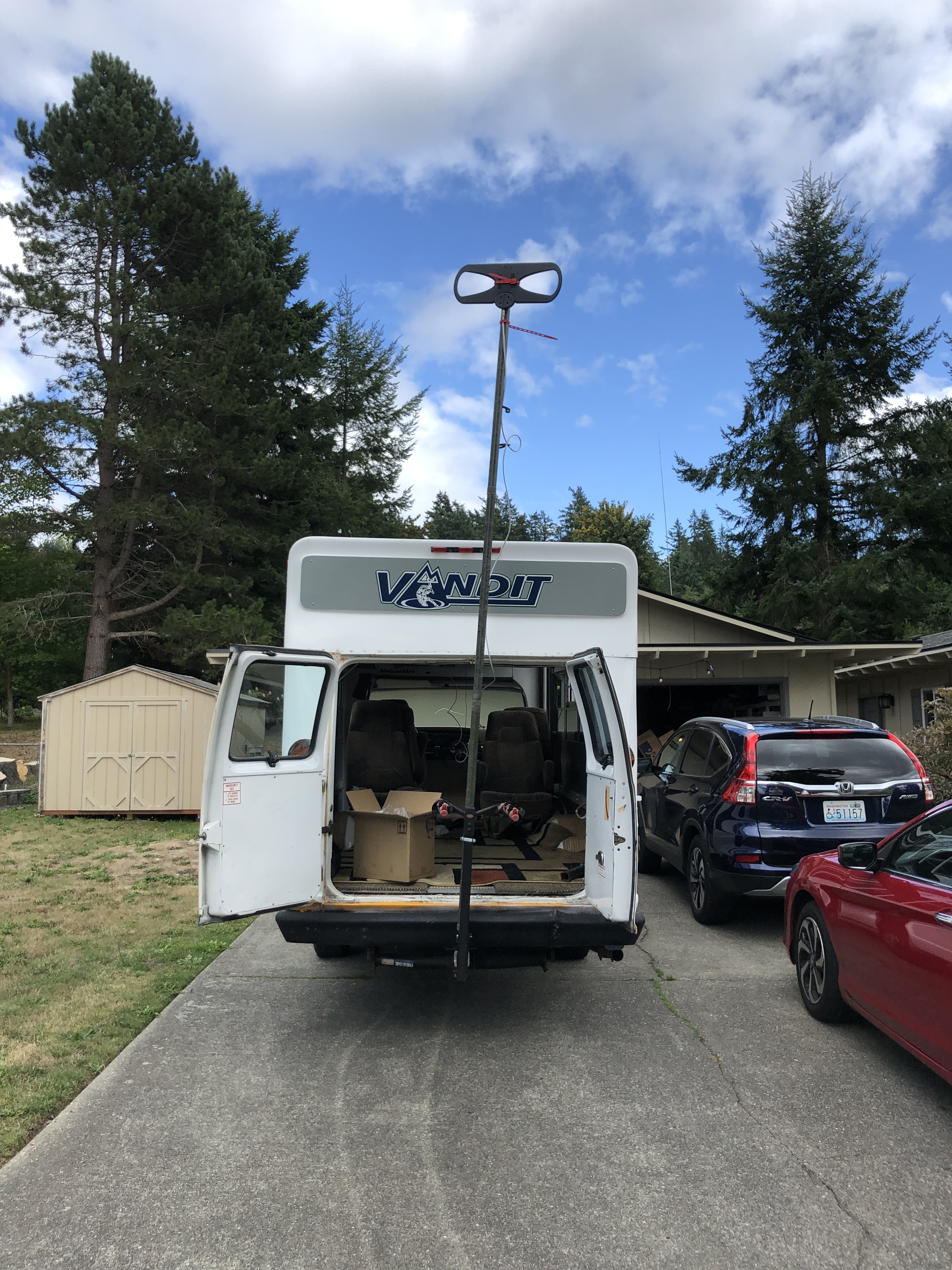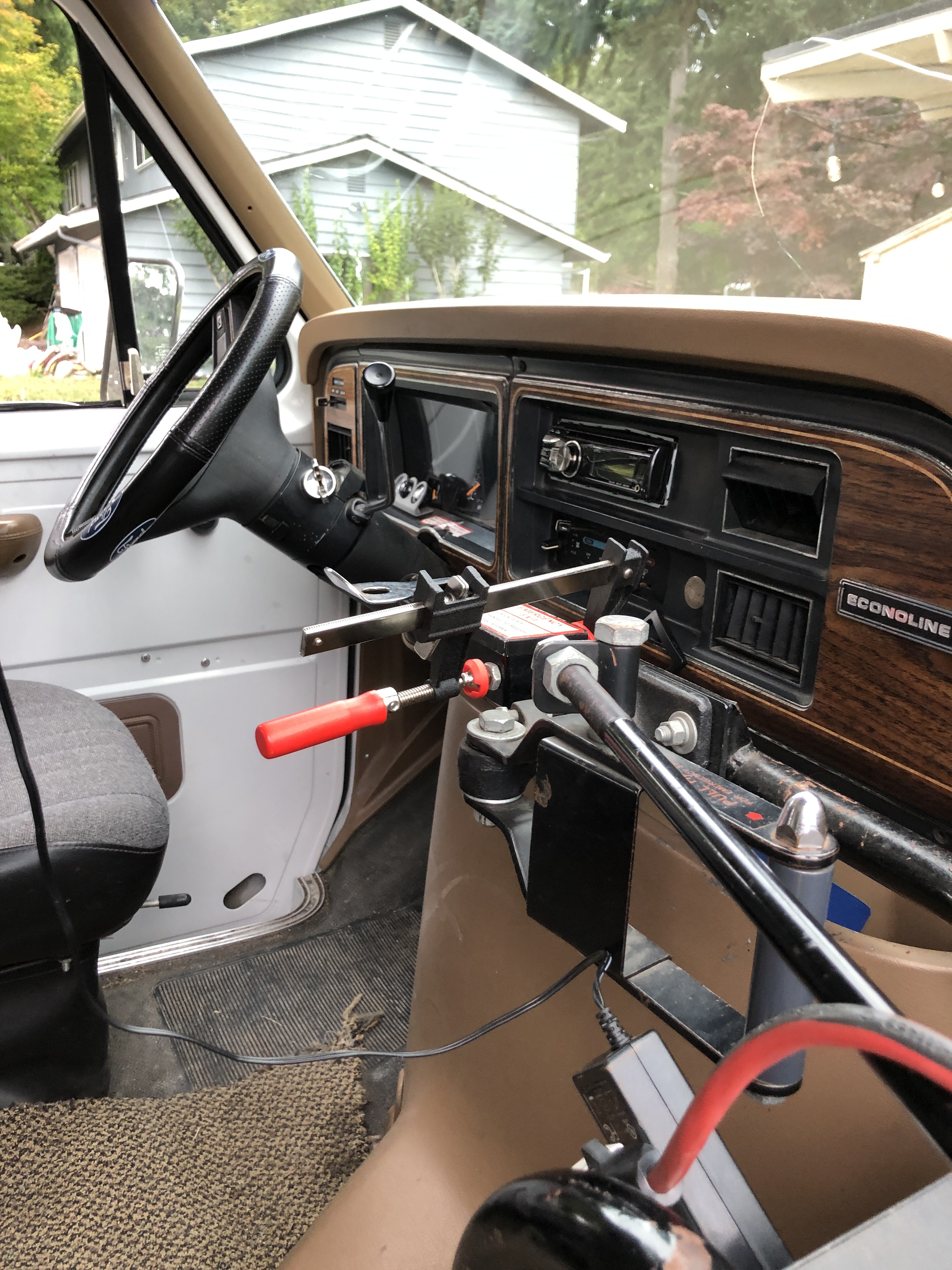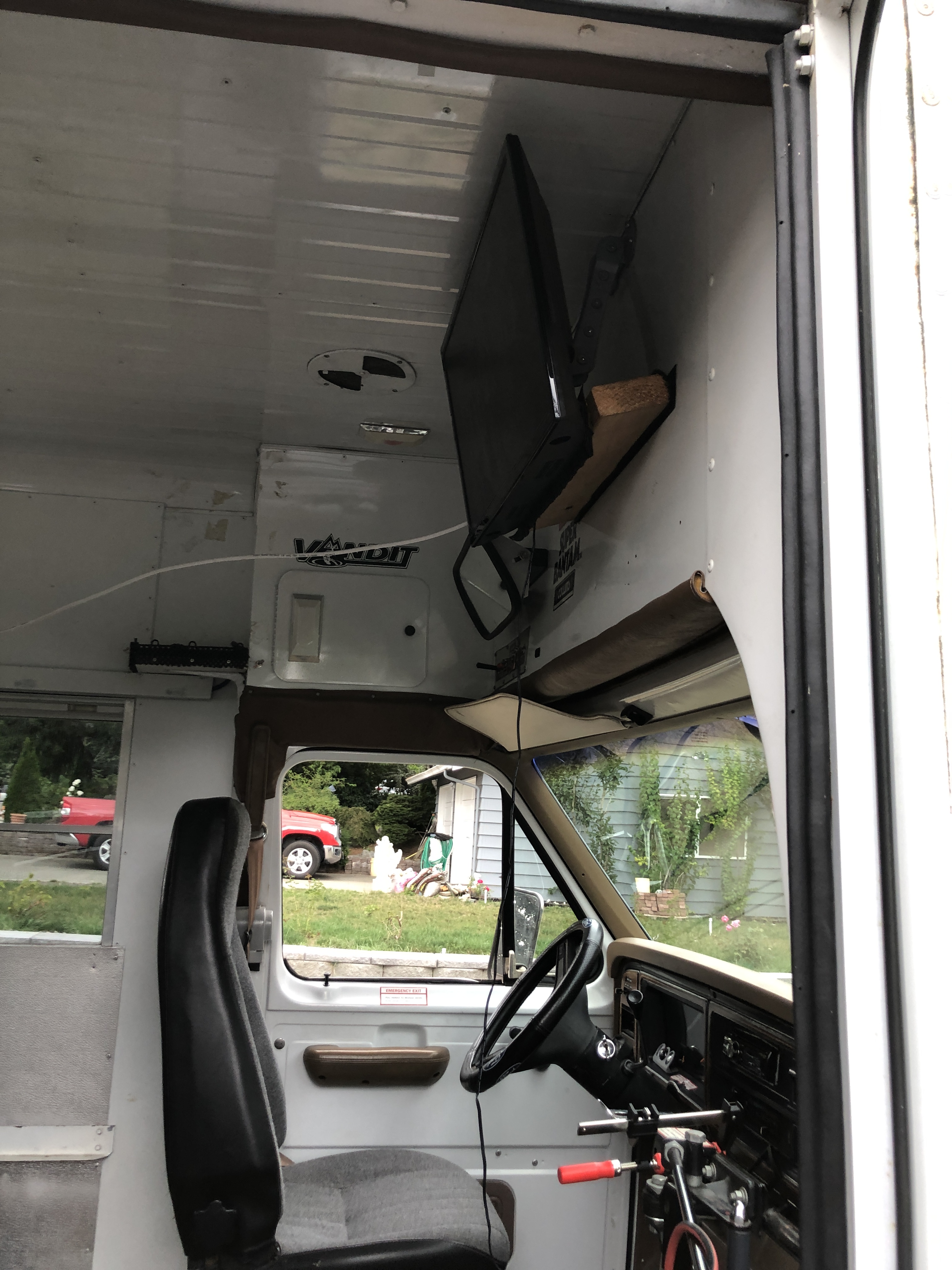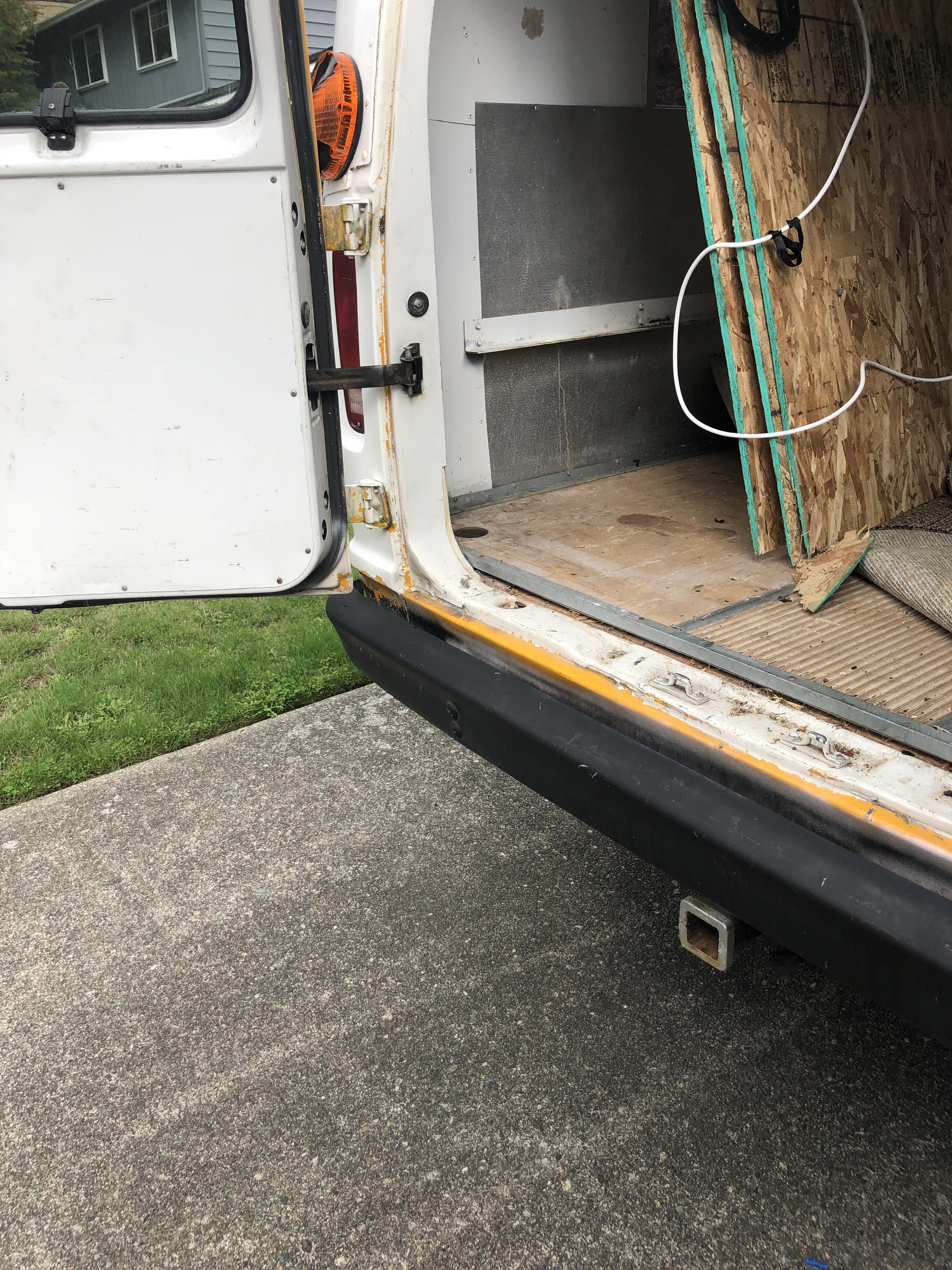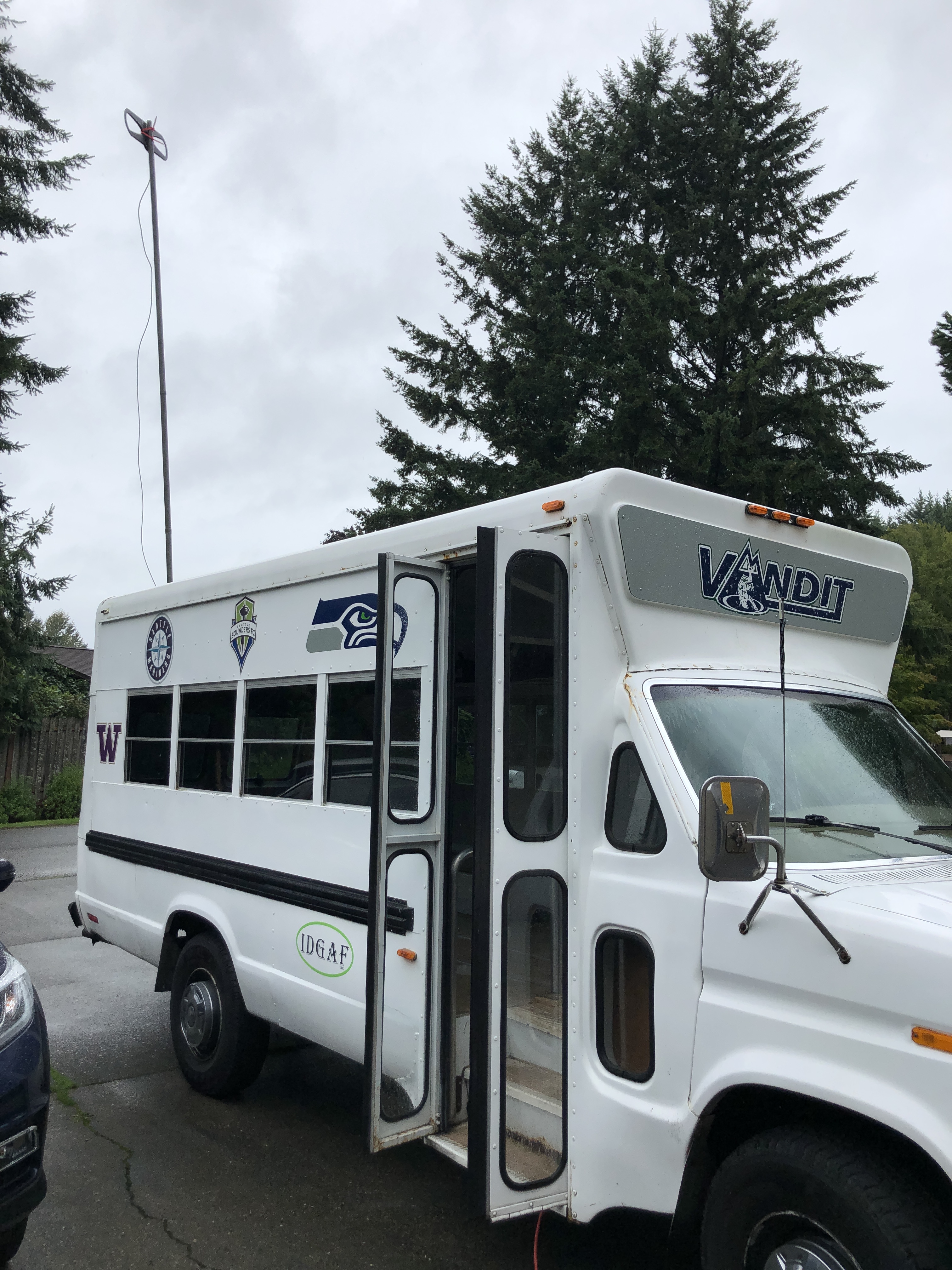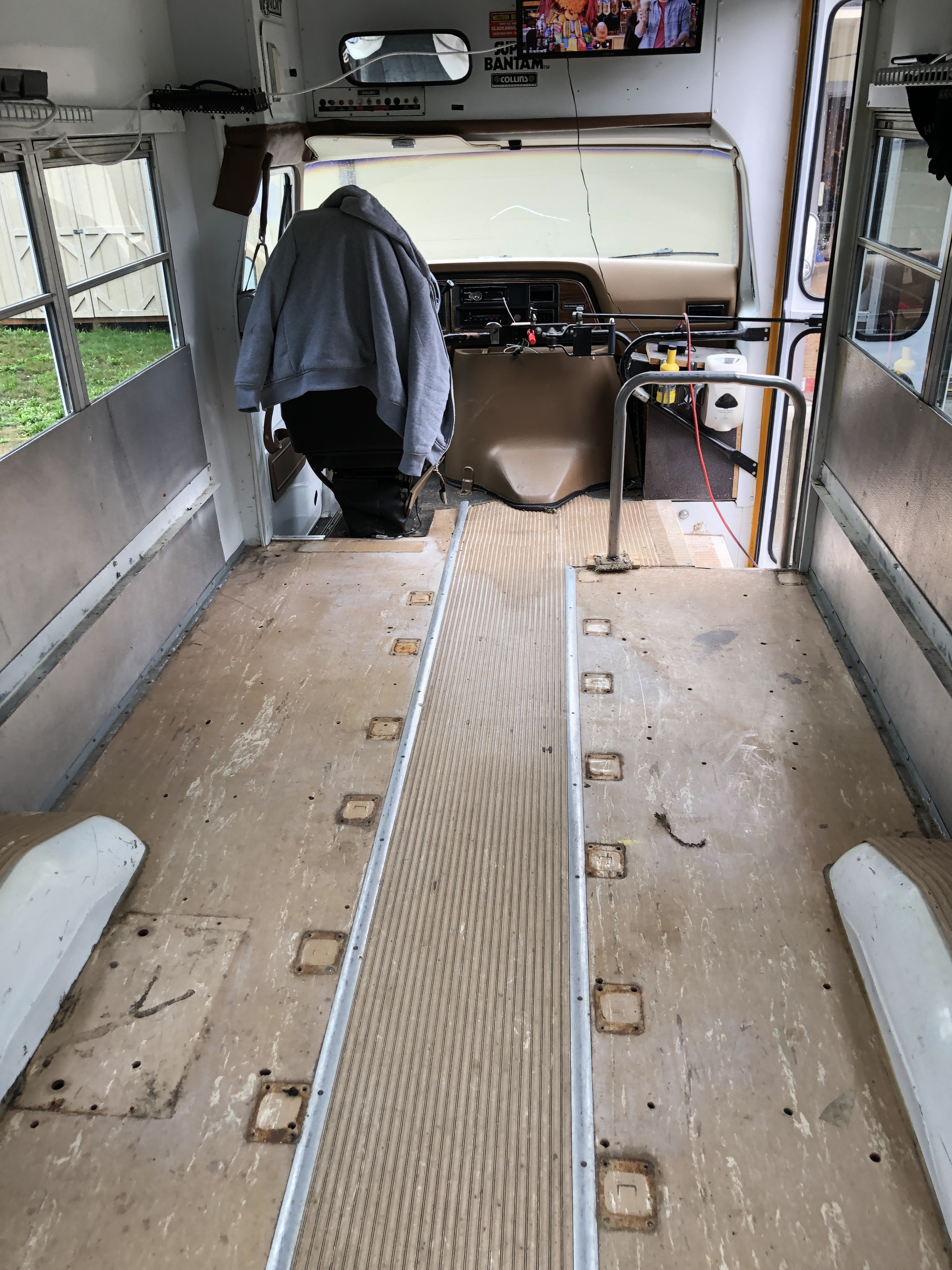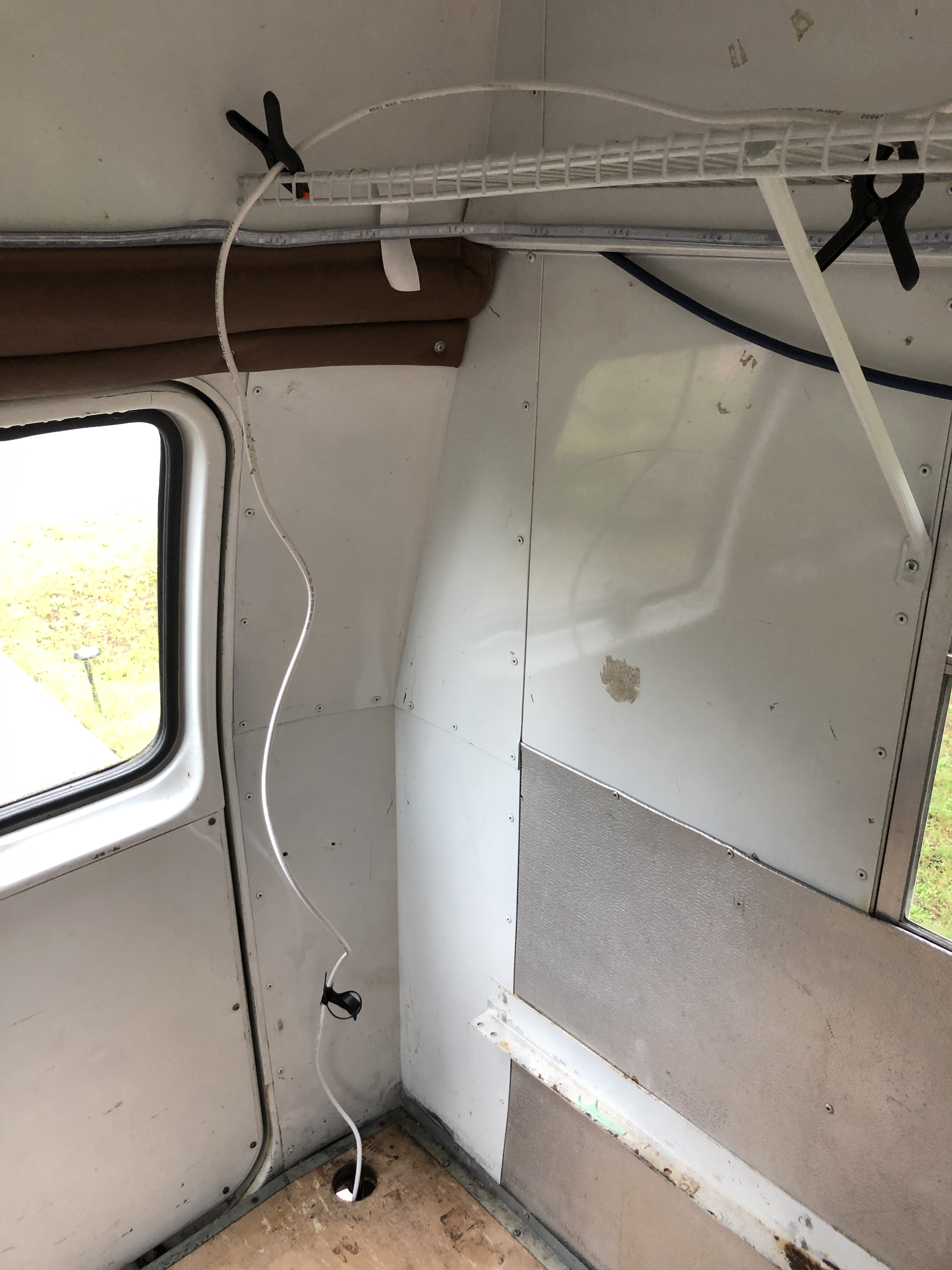The Beachcomber

For my 50th birthday, We bought a former school bus with the intent of creating a mobile ham shack and camper. It has a 7.3L Deisel Engine, just like the Ford E350 that from which the bus was built. It can carry 9000 lbs and tow 7500lbs.
I've liked the idea of doing some sort of conversion for a while. My biggest reason for wanting to do a project like this is to customize the buildout for my ham radio installation. I want to be able to put a VHF/UHF antenna on it for when I'm rolling down the road and an HF antenna for when it is parked for a short period of time. However, when I camp, I want to raise up an antenna mast and work HF on bigger and better antennas. I want to load it up with batteries that have enough charge to last a week and solar panels so that I won't need to worry about how much power I've consumed.
In the beginning, the camping build-out will be a small effort. I'll add a bed and a toilet to get started, then add other conveniences later. Most power will be DC off of the ham radio batteries or LCD lights running off of AA or AAA batteries. I will have some room for appliances that I'll plugin when I have hookups at a campground. Otherwise, it's DC and camp cooking.
A Mast
In Boise, I picked up some fiberglass masting that was used to hold up camo nets over fighter jets so that they would not be seen by aircraft flying above. I removed the net spreaders from the kit, and just use the interlocking poles as my antenna mast. I have a set of U-bolts that secure the masting to the bicycle rack that plugs into the trailer hitch. The camper came with a TV that runs off of a power inverter which pulls from the bus' batteries. I hooked the TV antenna jack to an HDTV outdoor antenna on 12 feet of masting. My auto-scan for channels picked up 16 digital channels sitting in my driveway. I intend to use this mast for supporting a dipole HF antenna and possibly a VHF/UHF antenna at the same time that it is supporting a TV antenna.
The Name
When I was a kid, I spent a number of summers at my grandmother's marina. I remember a free weekly newspaper called "The Beachcomber." A number of years later, when I got my ham license, KC7NJB, my friend asked me what "NJB" would stand for. I replied, "New Jersey Beachcomber." So, when it came time to name a bus / mobile ham shack that is going to be staying at campgrounds all around the Puget Sound, many of which are on the beach, "The Beachcomber" seemed like an appropriate name.
Equipment
When I first moved to Bainbridge Island, I decided to build an HF shack in my truck. I bought a 100W Yaesu FT-857D which covers 160m - 70cm, including 60m and 6m. This radio can drive Yaesu's Active Tuing Antena System (ATAS-120), which extends and retracts the antenna coil coupling to tune the antenna to the operating frequency. To reduce the time it takes to tune for the 2m and 70cm bands, I'd added a dual-band mag-mount antenna that I picked up at HRO in Sunnyvale, while I was picking up a remote control mic (Yaesu MH-59A8J). I wrote about this in my blog.
For Internet access, I intend to use my old Chromebook from Hewlett-Packard (HP 14-Q039wm). It has Wi-Fi, but also has 200MB of 4G data per month for life. This isn't a lot. But, it will give me a lot of QRZ lookups while I'm operating somwhere that Wi-Fi isn't available. To make sure that it has power, I bought an auto power adapter. For other devices, I'll added a 4-port 2.4amp USB power strip, which can charge my tablet, cellphone, Kindle, or a number of other items that I may need.
Uses
Besides emergency use and camping excursions, I plan to do some contesting in the Beachcomber. Most notablly, I'll use it for ARRL Field Day.

